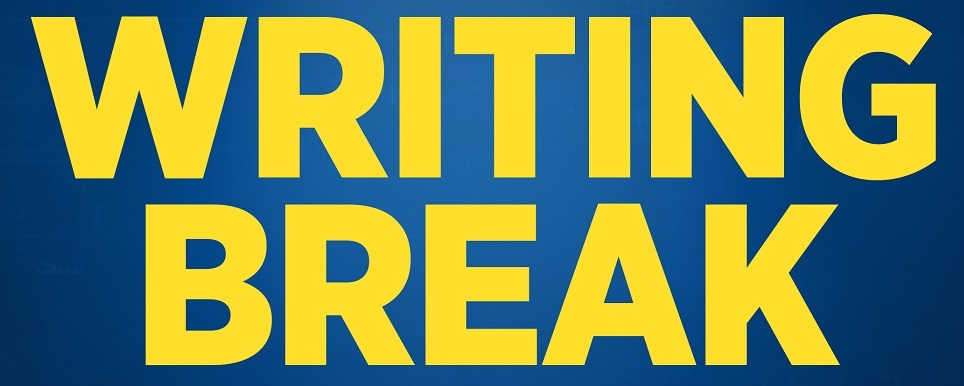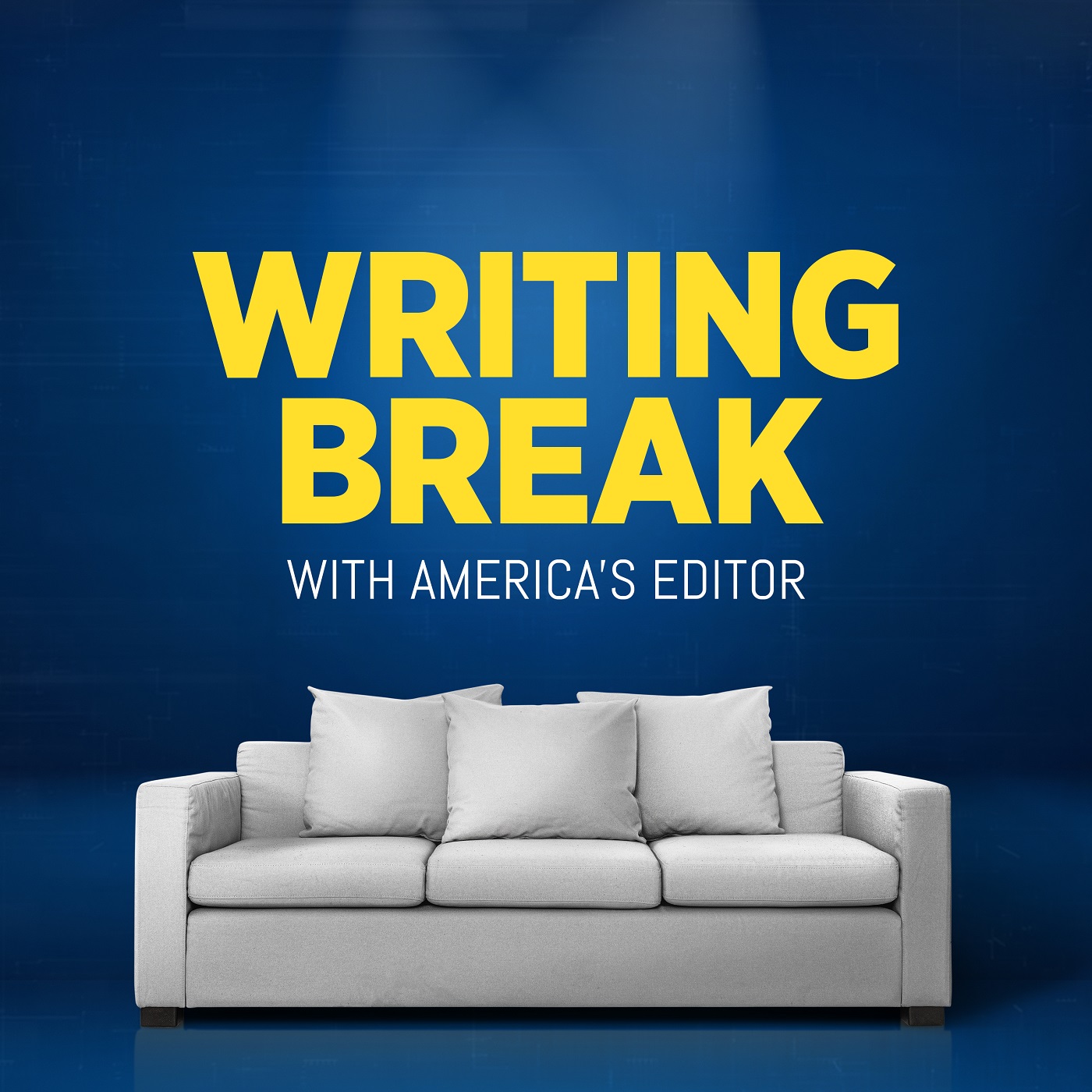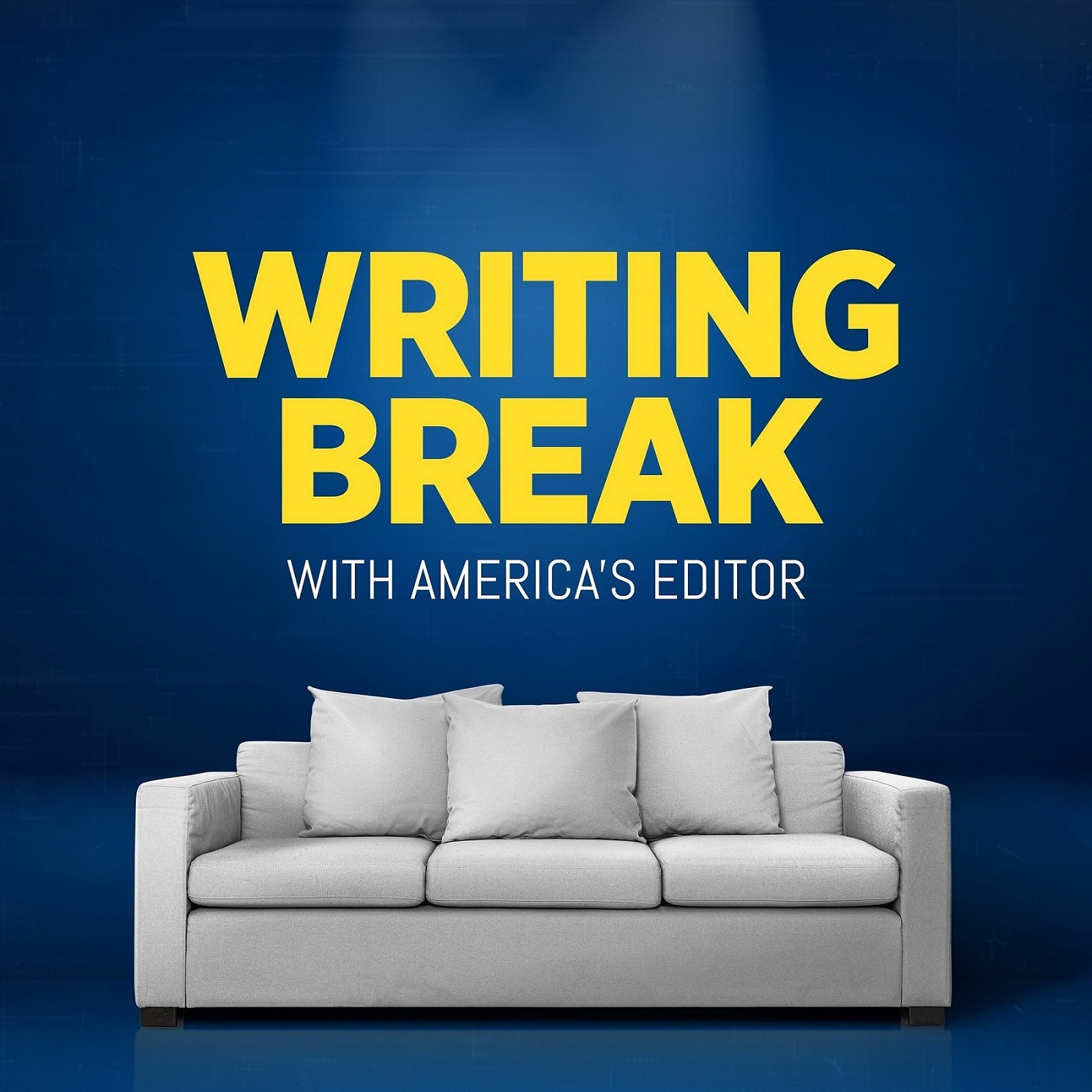Episode 123
Querying Literary Agents, Part 3: Writing Your Query Letter
In today’s episode of Writing Break, we’re dog-sitting, dodging deadlines, and diving deep into the dreaded query letter.
🛋️
Overthinking Couch Topics:
- The classic 3-part structure of a fiction query letter
- What makes a strong nonfiction pitch
- A breakdown of the 7 essential parts of a book proposal
- The 5 most common query mistakes
🎧 Catch up on the series:
- Querying Literary Agents, Part 2: Where the Lit Agents Are and How to Find Yours - Writing Break
- Querying Literary Agents, Part 1: Big Five Dreams or Indie Vibes? - Writing Break
- Free Style Sheet Templates
- Free Writing Tips
Music licensed from Storyblocks.
Transcript
If you have plot bunnies coming out of your plot holes, it’s time for a writing break.
I find myself unexpectedly dog-sitting this week, shuffling back and forth between two homes a couple of times a day. My friend is driving from the East Coast all the way to Oklahoma and back, and she has encountered a spot of rain now and again. This means her quick trip is being slowly extended and the publishing news will have to wait until next week. Ah, the best laid schemes o’ women and writers.
But we are still continuing our four-part series on querying literary agents. Today, in part 3, we are discussing the dreaded query letter. Whether you’re querying fiction or nonfiction, there are a few clear steps to follow here, and we will be climbing those steps today. For nonfiction authors, we’ll also discuss what goes into a book proposal.
The Writing Break cafe is open, so I’ll meet you on the Overthinking Couch, drinks in hand. We’re talking query letters today, so bartender, make mine a double.
Having to write a query letter can feel like an insult. I’ve already written 80,000 words, why do I need to write any more? But time is precious and limited and fleeting, so you spend a bit of your time so that the literary agent doesn’t spend too much of their time on something they’re not interested in representing. Query letters are one of those things you should overthink.
A query letter is a one-page pitch that introduces you, your book, and why the particular agent you’re contacting should care about you and your book. There is a classic structure to these things, and much like septums, query letters might deviate from the classic structure and still achieve their purpose.
However, literary agents receive a massive amount of query letters, and we can pretend they don’t use AI to filter through them, but we know they do. Deviating too much from the classic query letter structure might result in the AI program ignoring your letter or outright rejecting you.
The classic structure for fiction query letters is three-fold.
First, there’s the hook. You should start the letter strong with a 1 to 2 sentence pitch. Include the title of your masterpiece, the genre, the word count, and comparable titles.
Next comes the mini synopsis, which is 1 to 2 short paragraphs summarizing your main character, their goal, what’s standing in their way, and what’s at stake. Include just the core narrative and emotional hook. I know it hurts, but you’ll have to leave subplots and worldbuilding out of this.
Finally, you’ll end the query letter with a short bio. This should be a maximum of one paragraph. Include your writing credentials, relevant experience, and/or a short statement about why you wrote this book.
Keep the tone of your query letter aligned with the tone of your book. If your book is funny, your letter can be light. If you’re writing a horror novel, you don’t have to scare the lit agent, but you also don’t have to make them laugh.
It is common for literary agents to ask that you send either the first few pages or three entire chapters along with your query letter. Sometimes they want the first three chapters, and sometimes they want any three chapters. You’ll find this information in the submission guidelines for each agent or agency. Read carefully. So so carefully.
For both fiction and nonfiction, it is incredibly important that you address each letter to the correct agent. You might send out dozens of query letters, so triple-check that you’re addressing the right agent and spelling their name correctly.
For nonfiction titles, you will need a query letter, but you’ll also need a book proposal.
For the query letter, you’ll start with the elevator pitch, which tells the reader what your book is about and why you’re writing it now.
Next, you’ll provide details on your platform if you have one. This includes discussing your newsletter, podcast, social media following, as well as your academic or professional standing. This is where you prove that people care about your book’s topic. Follow that up by explaining why people will want to hear about the topic from you. Why are you the one writing this book?
Finish the letter by listing what other information will follow. That’s kind of confusing, hold on. OK, so your book proposal, which we will talk about next, will include your book’s topic, hook, and pretty much everything that is already in the query letter. There will be some overlap. But the book proposal will also include other sections not in the query letter. Let the agents know what additional information they’ll find in the book proposal. Agents usually want you to include the proposal in the body of the email rather than as an attachment, so your closing sentence can be something along the lines of, “below you will find my book proposal, including an overview of the book, a description of the target audience, and three sample chapters.”
A standard nonfiction book proposal includes at least 7 parts, divided by headers. Those headers are Overview, Target Audience, Competitive Titles, Author Bio, Marketing Plan, Chapter Outline, and Sample Chapters. Let’s zoom in.
Overview: What is the book about? Why are you writing about it now?
Target Audience: Who is this book for? It is important to show you understand the book market, at least as it pertains to your book.
Competitive Titles: What successful books exist that are like yours? How is your book different or even better than those titles?
Author Bio: You’ve already included your background, credentials, and platform in the query letter, and you should include them again here. This gives you a chance to expound on the information found in the query letter.
Marketing Plan: How do you plan to promote the book? Your publisher will do some promotion, but you will be expected to promote your book as well.
Chapter Outline: This provides a summary for each chapter. Yes, even the unwritten ones.
Sample Chapters: Not all literary agents want sample chapters with your query letter, but most do. You’ll send along about three chapters, but not necessarily the introduction or the first chapter. The sample chapters are what convince the agent and publisher you can deliver, so make them good.
While you do not need to be a household name to land a nonfiction deal, you do need to make a compelling case for your idea, your voice, and your relevance.
Whether you’re writing fiction or nonfiction, there is a guaranteed way of making your query letter stand out, which is by not making it stand out. What the bleep does that mean, Rosemi? It means do not make the same mistakes as everyone else. That alone will make your letter a rare gem. You already know to make sure you’re addressing the correct agent and that their name is spelled correctly. Here are 5 more common missteps authors make when submitting a query letter:
They ignore agent guidelines. But not you, you’ll definitely customize each letter and give them what they want according to what’s on their website.
They overhype their book. If you had a dollar for every time someone said their book was going to be the next Harry Potter, all your money troubles would be over.
They write too much biography. You can write a bit in the query letter and a bit more in the book proposal, but please refrain from writing your life story. In fiction you don’t have a book proposal, so what you put down in the query letter is it. And remember your query letter is one page; your author bio is one small paragraph.
They write a book summary in the query letter rather than a pitch. With a strong pitch in a fiction query letter, the agent will ask for a full manuscript. In nonfiction, the chapter outline should summarize each chapter, but even then it should be brief. You’re not writing a book report (thank goodness_.
They forget to include the genre or word count. But again, you would never do this. You are perfect in every way, and it’s just a matter of time until everyone else realizes it too.
OK, enough about query letters already. We all hate them, but it’s hard to get traditionally published without them.
Next time, we’ll talk about what happens after you hit send. How on Earth do you manage submissions, requests for more material, and rejection without losing your freaking mind? Please be sure that you’re following Writing Break and that you’re taking enough writing breaks.
Until next time, thank you so much for listening. And remember, as always, you deserved this break.
Thank you for making space in your mind for The Muse today.
Writing Break is hosted by America’s Editor and produced by Allon Media with technical direction by Gus Aviles. Visit us at writingbreak.com or contact us at podcast@writingbreak.com.



